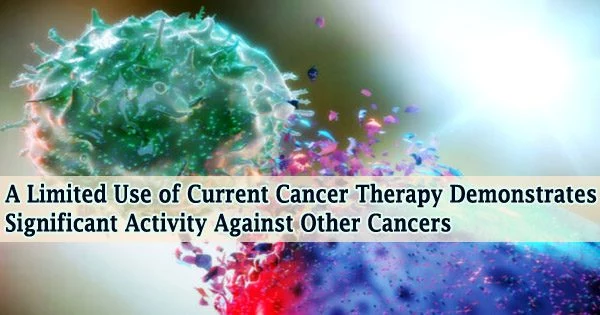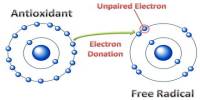Under specific circumstances, a medication that targets IDH1 mutations in some malignancies also seems to block the enzyme’s wild-type form. This characteristic explains why a wide variety of malignancies are susceptible to the treatment.
Given that mutant IDH1 is found in just 1% of tumors, this finding raises the chance that the medicine, Ivosidenib or AG-120, could become more generally relevant against a range of cancers. The results were just released in Nature Cancer.
“Historically, only a few groups have cared about wild-type IDH1,” said Jordan Winter, MD, Division Chief of Surgical Oncology at University Hospitals (UH) Seidman Cancer Center and senior author on the study. Dr. Winter is also John and Peggy Garson Family Endowed Chair in Pancreatic Cancer Research and Jerome A. and Joy Weinberger Family Master Clinician in Surgical Oncology.
“IDH1 therapeutic investigations have principally focused on the development of mutant IDH1 inhibitors. Less than a handful of reports have focused on wild-type IDH1 inhibition. We showed, along with a few others, that wild-type IDH1 is an important target. We think that Ivosidenib, previously called AG-120, may be applicable to the large majority of cancers-the one percent with mutant IDH1 and the remaining 99% with wild-type IDH1.”
The observation that cancer cells depend on IDH1 metabolism to survive in a harsh and nutrient-deficient tumor microenvironment is fundamental to this discovery.
According to the study’s first author Ali Vaziri-Gohar, PhD, Postdoctoral Fellow in the Department of Surgery at Case Western Reserve University School of Medicine, nutrient limitation that is present in all pancreatic cancers may provide a novel therapeutic avenue.
“Wild-type IDH1 activity is a metabolic requirement for cancer cells living in a harsh metabolic milieu,” he said. “We found that IDH1 is very important for cancer cells’ survival in a stressful microenvironment. When the cancer cells have less oxygen and less glucose or glutamine, anything that hurts them, they need a defense mechanism to protect them, which is this important molecule IDH1.”
The genetic suppression of IDH1 in pancreatic cancer cells in cell culture under low nutritional conditions and in mice models of pancreatic cancer was shown in laboratory tests by Dr. Winter, Dr. Vaziri-Gohar, and colleagues.
IDH1 therapeutic investigations have principally focused on the development of mutant IDH1 inhibitors. Less than a handful of reports have focused on wild-type IDH1 inhibition. We showed, along with a few others, that wild-type IDH1 is an important target. We think that Ivosidenib, previously called AG-120, may be applicable to the large majority of cancers-the one percent with mutant IDH1 and the remaining 99% with wild-type IDH1.
Dr. Jordan Winter
Additionally, they discovered that Ivosidenib, an FDA-approved inhibitor of mutant IDH1, was surprisingly effective against the protein’s wild-type form, particularly when combined with the crucial circumstance of low magnesium. This latter point had been overlooked in prior studies.
Dr. Vaziri-Gohar said that this finding was a bit of scientific serendipity.
“Initially, we were using this drug as a negative control,” he explained. “Then we found we can use this drug against cancers that have wild-type isoforms if we reduced levels of magnesium. We tested this hypothesis in cell culture and saw that when the magnesium levels reduced in the tissue culture, they responded to the inhibitor with and lowered activity of the enzyme. This in turn decreased cancer cell survival.”
“However, under the normal cell culture conditions with standard magnesium levels found in the blood or culture media, they didn’t respond to this drug. We then realized that magnesium levels were much lower in tumors than in standard culture conditions, so that the drug was actually effective against pancreatic and other cancers when given to animals harboring these tumors.”
Low magnesium levels increased allosteric medication inhibition, and ambient low glucose levels increased cancer cells’ reliance on wild-type IDH1. Thus, low magnesium and low nutrition, two characteristics present in tumors, made them vulnerable to the medication.
Ivosidenib has now been evaluated in mice models of melanoma, lung cancer, ovarian cancer, pancreatic cancer, and colorectal cancer by Drs. Winter and Vaziri-Gohar. Ivosdenib’s anti-tumor effects in each of these cases were on par with or better than those of an earlier investigation of anti-IDH1-mutant tumor therapy.
Similar results were seen with other medicines created as mutant-IDH1 inhibitors against cancers without the mutation. Ivosidenib increased median survival in the immunocompetent mouse pancreatic cancer model by a factor of more than two.
The fact that these results were confirmed in a different lab, in an experiment conducted on the other side of the Atlantic Ocean, was also crucial to the study. Dr. Jennifer Morton of the Beatson Institute in Scotland, a renowned expert on mouse models, carried out this experiment in a genetically modified mouse that gets pancreatic cancer.
A clinical trial, which is the next stage in the team’s research, will be made possible by funding from the John and Peggy Garson Family and the Gateway for Cancer Research. 15 patients with resectable pancreatic cancer will be enrolled by Dr. Winter and Dr. David Bajor in a Phase I trial of Ivosidenib combined with the gold standard of therapy, FOLFIRINOX.
Prior to surgery, patients will get three months of treatment, with imaging, biochemical blood indicators, and ultimately histology used to evaluate their response to treatment.
“The primary endpoint is just to determine safety of the drug with the existing chemotherapy regimen, because it’s never been given together,” Dr. Winter, who is also a professor in the Department of Surgery at Case Western Reserve School of Medicine and Member of the Developmental Therapeutics Program at Case Comprehensive Cancer Center, explained.
“We’re going to compare it to patients who get chemotherapy prior to surgery without the Ivosidenib. However, one of the great things about this trial is that because all of the patients are going to be undergoing surgery, we are going to have all the tumors to analyze and we will be able to assess the tumors for the same metabolic changes previously observed in the lab. We’re going to be looking at those same data points, those same markers of response in the patients’ tumors to try to demonstrate the biologic activity inside pancreatic cancer in the patients.”
Dr. Vaziri-Gohar says he’s thankful for the spirit of collaboration across institutions that has allowed the project to progress to this point.
“Beyond the science, it was so gratifying to work with so many people towards a common goal,” he said. “That’s the most important thing to me. That we worked as a team and hopefully our discovery will help patients. We are so lucky that we have all of these researchers and institutions involved.”
Dr. Winter is optimistic about what might be achieved. “In our hands and in pre-clinical models, wild-type IDH1 represents a true metabolic vulnerability in cancer cells and is a bona fide therapeutic target across a wide range of wild-type IDH1 cancers,” he said.
“Mutant-IDH1 inhibitors, including FDA-approved Ivosidenib, are potent wild-type IDH1 inhibitors under conditions present in tumors. Since pancreatic and other tumors share this feature, these drugs are compelling investigational agents for these expanded indications.”
















